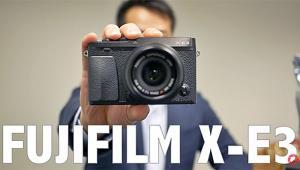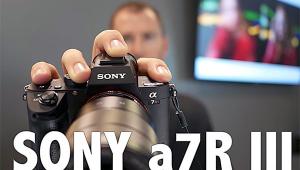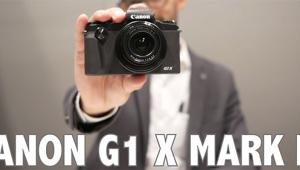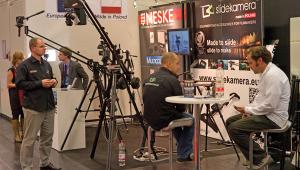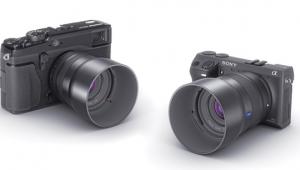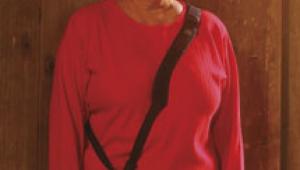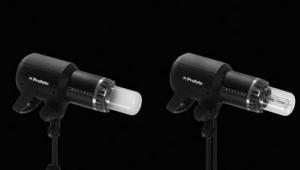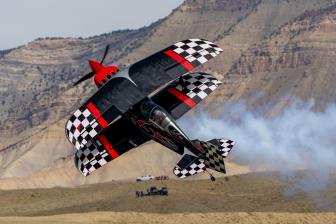PMA International
Printers And Flat-Bed Scanners
Coming as it does shortly
after the MacWorld Expo and shortly before the Seybold graphic arts
show, some companies did not launch new printers or flat-bed scanners
at PMA. In fact, there appeared to be more new film scanners than flat-beds,
and you can read about these devices in David B. Brooks' PMA report
elsewhere in this issue. There were, however, some new printers and
flat-bed scanners that were introduced by companies who were exhibiting--even
though the devices themselves were not there--along with the appearance
of a few products that had been previously announced but were finally
shipping. In addition, manufacturers were finally responding to questions
from digital imagers about the stability of ink jet media and inks and
several companies shared the results of their archival testing with
me. |
|||
Agfa showed all its flat-bed
scanners at PMA including the new SnapScan 1212U in Bondi Blue, a translucent
version of the company's USB(Universal Serial Bus) compatible scanner.
The Snap-Scan 1212U has an optical resolution of 600x1200 ppi (pixels
per inch) which can be interpolated up to 9600ppi. |
|||
Epson showed me their new Expression
800 flat-bed scanner that has an optical resolution of 800x3200. The speedy
scanner, which was decorated with hot rod-like flames for PMA, can create
a full color preview in less than 7 sec and can scan up to an 8.5x11.7
color photograph at 300dpi in less than 25 sec. The Expression offers
36-bit color depth (internally and externally) and can scan negatives
and transparencies at a dynamic range of 3.3 with the optional film adapter.
While all this techy stuff is cool, the big news is that Epson has bundled
Monaco Systems Profiler Lite color management software with the Expression
800. Profiler Lite is color management for the masses and here's
how it works: You scan a test print that's included with the scanner
and print it. You then place both the test print and your output on the
scanner bed and rescan both of them. The software analyzes the differences
between the test print and your print and makes the necessary corrections
for input and output match one another. The scanner is available in three
models: The Artist model has a street price of $799 and is bundled with
SilverFast 4.0, which is one of the best scanner drivers I've ever
used. The Pro model costs $999 and includes a transparency adapter. If
you're looking for a bare bones model, the $699 Executive lacks
the aforementioned software and transparency unit but does include SilverFast
Lite software. |
|||
Desktop Printers.
Canon Computer Systems announced two new Color Bubble jet printers: The
BJC-5000 and BJC-4400. The BJC-5000 uses a new dual cartridge design and
can print pages at up to 7.5 pages per minute (ppm) in text (black ink)
output mode. Replacing the black ink cartridge and using two color cartridges--the
standard and optional Photo Inks for 7-color printing--the speed drops
to 3.5 ppm for photo-realistic output. The new dual cartridge design includes
two print heads that sit side by side and shuttle across half a page instead
of having to streak across the full width. A new 32-bit driver lets you
print photo-realistic images on plain paper at 720x720dpi on plain paper
and at 1440x720dpi on what Canon refers to as "specialty"
papers designed for photographic output. The BJC-5000 can also print 100
percent coverage on standard letter-sized paper--something I've
never seen any ink jet printer do before. Canon even offers LetterPlus
paper that measures 9x13.3", allowing you to print full bleed 8.5x11"
images, then remove the edges after printing is complete to leave full
letter-sized output. The printer can also handle an 11x17" paper
as well as card stock or art paper up to 146 lbs through the manual feeder.
The sheet feeder, by the way, holds 130 sheets of paper. The BJC-5000
has an estimated street price of $299 and ships with black and color cartridges
along with drivers for Microsoft Windows 95. The BJC-4400, also introduced
but not visible on the floor, offers 720x360dpi output with a monochrome
printing speed of 6.5 ppm and color of 2.5 ppm. The printer has an estimated
street price of $199. Need a scanner, too? For less than a hundred bucks,
swap out the print head for the IS-22 Color Image Scanner head and turn
the BJC-4400 into a 24-bit 360dpi color scanner. Like the BJC-5000, the
4400 is designed for Windows users and feature a parallel connection port. |
|||
Although not officially shown
on the floor, Epson gave me a sneak preview of its new Stylus Photo 750
that will be shipping by the time you read this. The new ink jet printer,
clad in black unlike the 700 which will remain in the product line, is
a six-color device capable of printing at resolutions of 1440x720 even
on plain paper. The printer is 150 percent faster than the Stylus Photo
700 or EX and can print an 8x10 photograph in two minutes. The big news
is that the MicroPiezo ink jet technology print head is now capable of
printing ink drops as fine as six picoliters (that's small) and
makes use of variable dot technology that places small drops where appropriate
or larger drops when needed--all on the same image. All of the inks currently
used in Epson printers are a quick dry type. The paper tray can hold 100
sheets of paper or even 100 envelopes. The Stylus Photo 750, like most
Epson printers is compatible with Microsoft Windows and Mac OS computers
and includes parallel, serial, and USB ports. Cost of the new printer
is $299. |
|||
Ink Jet Print Stability |
- Log in or register to post comments






